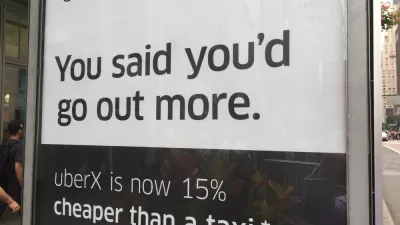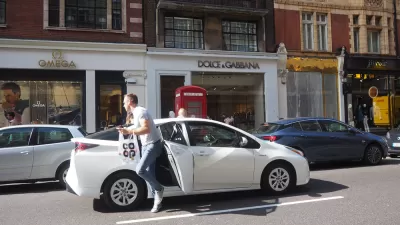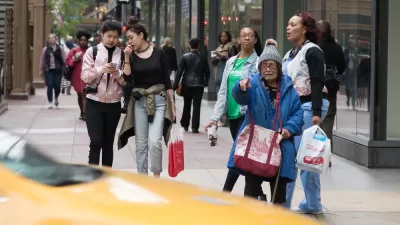New data from Fehr & Peers shows services like Uber and Lyft account for a larger share of the total traffic than previously thought, especially in city centers.

In Boston’s Suffolk County about 1 in every 13 miles driven is driven for Uber or Lyft.
That’s just one of a slew of interesting pieces of information released by Fehr & Peers on how many miles ride-hailing cars travel. Vehicle miles traveled, or VMT, have been climbing in the United States since the economic recession of 2008. Many things have changed since then in the world of transportation, including the arrival and growth of ride-hailing services. This upward trend in miles traveled has meant an upward trend in vehicle emissions, including those that contribute to climate change. Initially there was some hope that ride hailing might actually curb VMT (a hope ride sharing companies were eager to promote), but this study (among others) shows that that has not happened.
The study shows the percent of VMT from ride-hailing companies for cities like Boston (8.5%), San Francisco (13.4%), and Washington D.C. (7.2%). "These numbers suggest that ride-hailing is hitting traffic harder in many cities than previously understood," Laura Bliss writes for CityLab.
Data also shows that the traffic is most concentrated in regions that are well served by public transit. In some cases, a Lyft or Uber ride may entail more VMT than would a private vehicle—as much of the distance these vehicles travel is without a passenger. "On average, between the six cities, just 54 to 62 percent of the vehicle miles traveled by Lyfts and Ubers were with a rider in tow," Bliss reports.
FULL STORY: How Much Traffic Do Uber and Lyft Cause?

Trump Administration Could Effectively End Housing Voucher Program
Federal officials are eyeing major cuts to the Section 8 program that helps millions of low-income households pay rent.

Planetizen Federal Action Tracker
A weekly monitor of how Trump’s orders and actions are impacting planners and planning in America.

Ken Jennings Launches Transit Web Series
The Jeopardy champ wants you to ride public transit.

Washington Legislature Passes Rent Increase Cap
A bill that caps rent increases at 7 percent plus inflation is headed to the governor’s desk.

From Planning to Action: How LA County Is Rethinking Climate Resilience
Chief Sustainability Officer Rita Kampalath outlines the County’s shift from planning to implementation in its climate resilience efforts, emphasizing cross-departmental coordination, updated recovery strategies, and the need for flexible funding.

New Mexico Aging Department Commits to Helping Seniors Age ‘In Place’ and ‘Autonomously’ in New Draft Plan
As New Mexico’s population of seniors continues to grow, the state’s aging department is proposing expanded initiatives to help seniors maintain their autonomy while also supporting family caregivers.
Urban Design for Planners 1: Software Tools
This six-course series explores essential urban design concepts using open source software and equips planners with the tools they need to participate fully in the urban design process.
Planning for Universal Design
Learn the tools for implementing Universal Design in planning regulations.
Heyer Gruel & Associates PA
Ada County Highway District
Institute for Housing and Urban Development Studies (IHS)
City of Grandview
Harvard GSD Executive Education
Toledo-Lucas County Plan Commissions
Salt Lake City
NYU Wagner Graduate School of Public Service





























